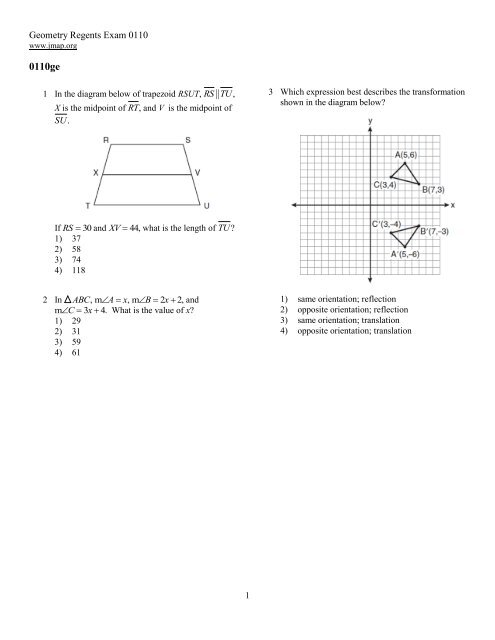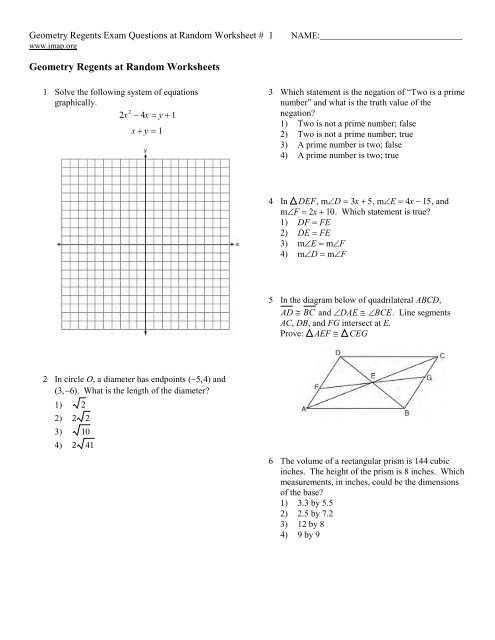Table of Contents
- Geometry Regents Exam 2 [June 2015] Questions 14 - 20 - YouTube
- January 2020 Geometry Regents Answers
- June 2018 Geometry Regents Answers Part 1
- Geometry Regents January 2024 (Questions 25-35) - YouTube
- January 2017 Geometry Answers # 25 to 29 NYS Regents Exam Common Core ...
- Master Geometry with Our Exclusive Leap 2025 Practice Test
- Geometry Regents Exam 0110 - JMap
- (PDF) GEOMETRY OF THE - JMAP HOME - Math Regents Exams Integrated ...
- Geometry August 2022 Regents Answers in Color
- Geometry Regents at Random Worksheets - JMap

Geometry is an essential part of various fields, including architecture, engineering, and design. With the advent of digital technology, geometric calculations and representations have become more efficient and accurate. One of the most popular file formats used to share and view geometric designs is the Portable Document Format (PDF). In this article, we will delve into the world of PDF geometry, exploring its benefits, applications, and best practices for working with geometric PDF files.

![Geometry Regents Exam 2 [June 2015] Questions 14 - 20 - YouTube](https://i.ytimg.com/vi/5L6KuSPPZVE/maxresdefault.jpg)
What is PDF Geometry?

PDF geometry refers to the use of geometric shapes, such as points, lines, circles, and polygons, to create and represent designs, models, and structures within a PDF file. This file format allows users to share and view geometric designs with precision and accuracy, without compromising on the quality or integrity of the original design.


Benefits of PDF Geometry

The use of PDF geometry offers several benefits, including:

- Accuracy and Precision: PDF files ensure that geometric designs are represented accurately, without any loss of data or distortion.
- Collaboration and Sharing: PDF files can be easily shared and viewed by multiple stakeholders, facilitating collaboration and communication.
- Security: PDF files can be secured with passwords and encryption, protecting sensitive geometric designs from unauthorized access.

Applications of PDF Geometry
PDF geometry has a wide range of applications across various industries, including:
- Architecture and Construction: PDF files are used to share and view building designs, floor plans, and blueprints.
- Engineering and Manufacturing: PDF files are used to share and view designs, models, and specifications for products and systems.
- Design and Graphics: PDF files are used to share and view graphic designs, logos, and artwork.

Best Practices for Working with Geometric PDF Files
To get the most out of PDF geometry, follow these best practices:
- Use Specialized Software: Utilize software specifically designed for working with geometric PDF files, such as Adobe Acrobat or CAD programs.
- Optimize File Size: Compress and optimize PDF files to reduce file size and improve sharing and viewing efficiency.
- Use Layers and Objects: Organize geometric designs using layers and objects to facilitate editing and modification.
In conclusion, PDF geometry is a powerful tool for creating, sharing, and viewing geometric designs. By understanding the benefits, applications, and best practices for working with geometric PDF files, users can unlock the full potential of this technology and take their designs to the next level.